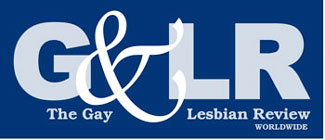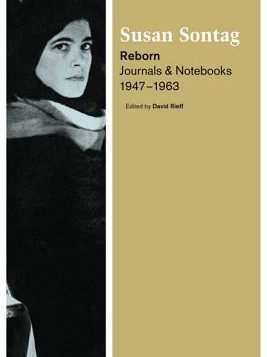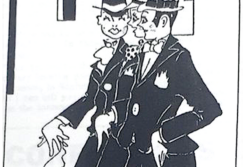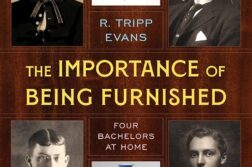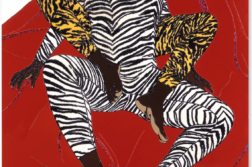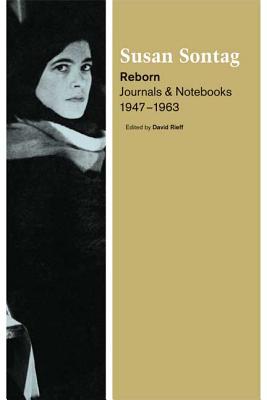 Reborn: Journals and Notebooks, 1947-1963
Reborn: Journals and Notebooks, 1947-1963
by Susan Sontag
Edited by David Rieff
Farrar, Straus and Giroux. 318 pages, $25.
ONCE upon a time, before feminism and Stonewall, I was an eighteen-year-old Jewish girl from Brooklyn who was desperately seeking guidance about how to live a life of the mind as a woman with “tendencies.” I needed a role model. I needed to believe that a woman could be a successful intellectual and create a life on her own terms. Susan Sontag became my longed-for muse.
Reborn: Journals and Notebooks, 1947–1963, edited by her son David Rieff, compiles Susan Sontag’s personal writings as a teenager and as a young woman, and it offers an extraordinary window into the mind of one of the most original thinkers of the late 20th century. The notebooks begin with Sontag as an adolescent and move on to her short stint at Berkeley, then to the University of Chicago years, through to her marriage to Phillip Rieff, the birth of their son, divorce, journeys to Oxford and Paris, and then back to New York City. The Sontag that reveals herself here is above all someone who’s determined to construct herself as a person of culture. Her self-improvement regimen includes literature, film, the arts, philosophy, history, politics: she devours culture. At the age of fourteen, in an entry dated 11/23/47, she’s already making declarations about how she wants to live: “I believe that the most desirable thing in the world is freedom to be true to oneself, i.e., Honesty.”
The journals are Sontag’s Bildungsroman: she is the central character in the story of her life. In this volume, which ends when Sontag is thirty, we learn of the early education and development of our protagonist. We see how she travels from youth to the beginnings of emotional maturity. As in any Bildungsroman, the Sontag of these notebooks is a sensitive, brilliant hero(ine) who leaves home, faces internal conflicts and crises, is wounded by love, and finally finds out who she really is and how to use her unique gifts and talents in the world.
The diaries reveal one of the major conflicts in Sontag’s life: her sexual orientation. In an entry dated 12/25/48, at the age of fifteen, she writes: “just as I was once terrifyingly and neurotically religious and thought that one day I should become a Catholic, so now I feel that I have lesbian tendencies (how reluctantly I write this).” On 4/2/49, she declares, “I am in love with being in love!—Whenever I can think of Irene … when I do not see her—whatever intellectual restraint I can imagine myself possessed of—vanishes with the pain + frustration I feel in her presence. It is not an easy thing to be rejected so utterly.” Confusion over her sexuality erupts yet again in an entry on 4/6/49: “what I know is very ugly—and so unbearable because it cannot be communicated—I tried! I wanted to respond! I wanted so much to feel a physical attraction for him and prove, at least, that I am bisexual.” Editor Rieff informs us that Sontag added in the margin of this entry, on May 31, 1949: “what a stupid thought! —‘at least bisexual.’”
The ups and downs of Sontag’s journey into Sapphohood is a recurring theme throughout the notebooks. Briefly euphoric at the discovery of her capacity to love, she declares on May 31, 1949: “I know the truth now—I know how good and right it is to love—I have, in some part, been given the permission to live—Everything begins from now—I am reborn.” But then on June 29, 1949, she states: “acceptance of my homosexuality—a rootless, frantic life—makes a drama of my unhappiness.” She takes us on a tour of lesbian bars in the Bay area in the late 1940’s. We struggle along with her during her two ongoing lesbian affairs with “H” and Maria Irene Fornes.
In extremely abrupt order, Sontag decides to leave Berkeley, resumes her studies at the University of Chicago, and becomes engaged to Phillip Rieff. She notes on January 5, 1950: “I marry Phillip with full consciousness + fear of my will toward self-destruction.” She is still a few weeks short of her seventeenth birthday. She offers no explanation for the marriage and barely discusses it. She doesn’t mention her pregnancy or talk about her son’s birth. Her marriage years are like a surreal sidebar that scarcely touches upon the flow of her real life.
When Sontag died in 2004, many gay men and lesbians voiced regrets that she had never officially come out as a lesbian. In a journal entry of December 24, 1959, she writes of “my desire to write is connected to my homosexuality.” Years later, in a 1995 profile in The New Yorker, she admitted to being bisexual but could not bring herself to publicly declare the truth about her sexuality. While the extent of her knowledge about gay and lesbian life was evident in her two most famous essays, “Notes on Camp” and “AIDS and Its Metaphors,” she did not want her work to be reduced to a sexual identity, fearing that this would ghettoize her as a writer and prevent her from addressing universal themes.
What the journals taken together clearly reveal is that Sontag’s lesbianism remained an aspect of her identity that she didn’t quite know how to integrate with the rest of her self project. Sontag wanted to be taken seriously as an intellectual. She wanted to live a life of the mind. As a lesbian, she had to face the sexism and homo-prejudice of a pre-feminist, pre-Stonewall world. Would we ever have heard of Susan Sontag if she had been an out lesbian from the get-go? We’ll never know.
In his preface, David Rieff discusses his decision to publish the notebooks, stating: “So whatever else there is to be said about the publication of Reborn, this first of what will eventually be a three-volume selection of Susan Sontag’s journals, it is not the book she would have produced—and that assumes she would have decided to publish these diaries in the first place. … The decision to publish the selection has been mine alone.” He goes on to explain: “It is not a decision I ever wanted to make … but my mother died without leaving any instructions as to what to do with either her papers or her uncollected or unfinished writing.” Since Sontag sold her papers to the UCLA Library with the condition of unrestricted access, Rieff reasoned that, “either I would organize them or someone else would … it seemed better to go forward.” But Rieff remains ambivalent about the project, wondering whether he’s invading his mother’s privacy, noting that the journals “were written solely for herself.” He worries that they’re too “self-revelatory” and frets especially over the material about her sexuality, admitting that “she avoided, to the extent she could, without denying it, any discussions of her own homosexuality or any acknowledgment of her own ambition.”
Susan Sontag was a fascinating and provocative writer. And she was glamorous, with her trademark turtleneck sweaters, black pants, alto voice, and that distinctive white streak in her jet black hair. In these journals, we find a complicated woman concerned with her own authenticity: “I feel I am masquerading, pretending. A person who has to remind herself to take a bath because she had such terrible feelings about her body.” And again, in the fall of 1959: “Result of self-consciousness: I live my life as a spectacle for myself, for my own edification. I live my life but I don’t live in it.” Reborn is a study of a complex women whose private life and secret self, including her sexual ambiguity, are at least as mesmerizing as her published works.
Irene Javors is a psychotherapist who lives in NYC. She teaches in the graduate program in mental health counseling at Yeshiva University.
